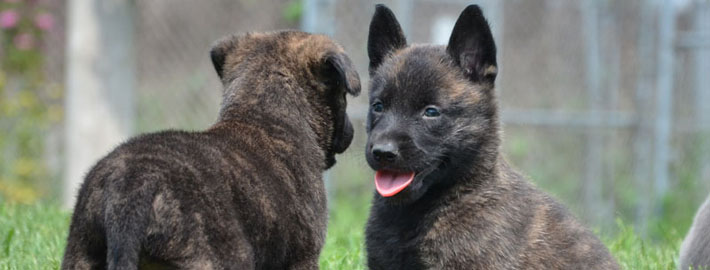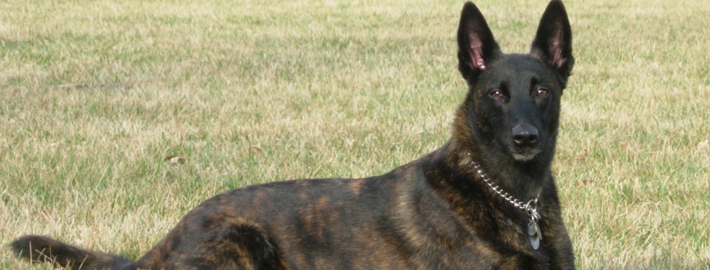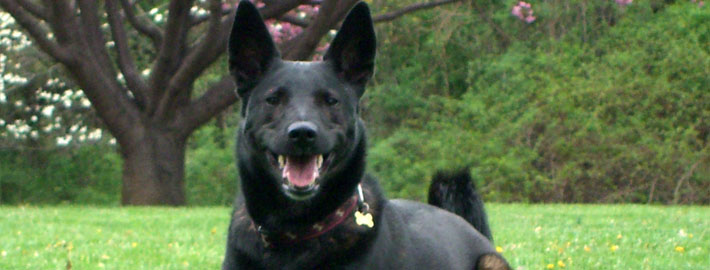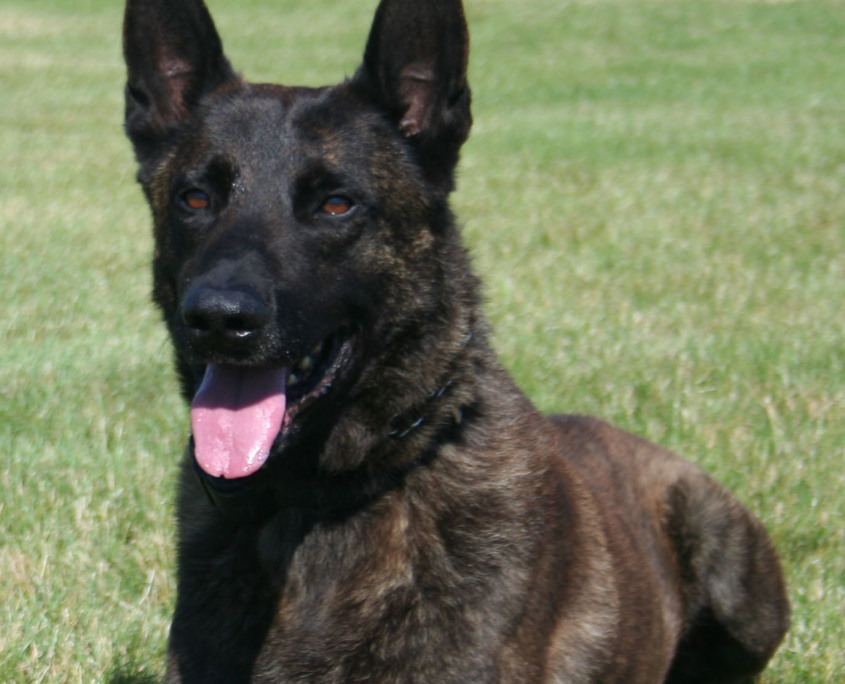What makes the Dutch Shepherd Unique?
Reliable, alert, intelligent, and intuitive, the Dutch Shepherd is loyal to his family. You’ll find this dog to be affectionate, happy and obedient – a wonderful combination in a dog. If you have other dogs in your household, no problem; this breed likes other animals.
Breed Groups
Page Contents
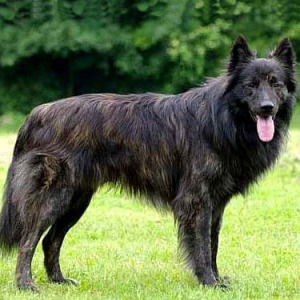
SnapShot
| Size: | Males – 56.9 to 62 cm (22 to 24 inches) Females – 54.9 to 59.9 cm (20 to 23 inches) |
| Weight: | Males – 29.5 to 30.5 kg (65 to 67.2 pounds) Females – 29.5 to 30.5 kg (65 to 67.2 pounds) |
| Origin: | Netherlands |
| Life Span: | 12 – 14 Years |
| Colour: | Gray Brindle, Salt & Pepper, Blue Gray, Brindle, Gold Brindle,Silver Brindle |
| Litter Size: | 6 to 10 puppies |
Is the Dutch Shepherd Right For You?
In 5 Words
- Alert
- Reliable
- Obedient
- Loyal
- Affectionate
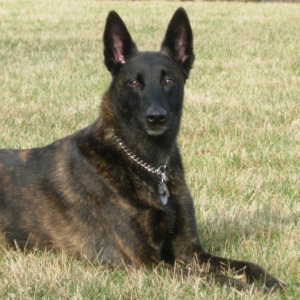
Characteristics
Learn About the Dutch Shepherd
Description
Dutch Shepherd dogs are medium-sized, medium weight, well-proportioned, well-muscled dog of powerful, well-balanced structure, with intelligent expression and lively temperament dogs. Depending on the coat the breed is distinguished in the following varieties: short-hair, long-hair, and rough-hair.
The head is medium in lenght, thin and conical. The eyes are almond-shaped, slightly slanting and the ears are short and kept straight. The tail is long, with rich hair and slightly curved. The variety with short hair can be brown with golden or silver stripes; the one with rough hair can be greyish-blue, salt and pepper, or reddish-brown and the one with long hair is chestnut, with gold or silver stripes.
Heavy white markings on chest and feet are not desirable in the show ring. Although the coat types vary, the color possibilities remain the same for each: various brindles in all shades of gold and silver and brindle with dark stripes.
Short History of the Dutch Shepherd
In the last century you could find many shepherd dogs all over Europe working with the shepherds and the sheep. It is said that the Dutch, Belgian and German Shepherd dogs resemble each other and are closely related. The differences, especially between the Dutch and Belgian, are very small.
Sometimes people say that the difference is artificial and they really belong to the same breed. The shepherds were not very interested in the exterior of the dogs, just their working capacity was important. In times gone by, shepherds and farmers needed a versatile dog. The Dutch Shepherd was discovered as a naturally occurring shepherd’s dog type living in the rural areas of the larger region that today includes The Netherlands.
Developed in 19th century Holland as an all-purpose working dog, the Dutch Shepherd was commonly used as a herder, farm dog, security/police dog and guard dog. Still very popular in their home country, Dutch Shepherds are harder to find elsewhere. The Dutch Shepherd is remarkably similar to their Belgian cousins – the Belgian Shepherds, but with perhaps more German Shepherd Dog blood in its ancestry.
Temperament
Very loyal and reliable, always alert, watchful, active, independent, with persistence, intelligence, prepared to be obedient and gifted with the true shepherding temperament.
The Dutch Shepherds are among the most competent of all shepherd dogs at such tasks as agility, catch, obedience competitions, guard work, herding, field trailing and companionship. Attached to its territory, and an enthusiastic worker, this affectionate, happy-to-be-around dog is obedient, sober and very loyal to its handler and family.
The Dutch Shepherd Dog is intelligent and is a very quick learner.
Caring for Your Dutch Shepherd
General Health
The Dutch Breed Club initiated a hotline in 2008 for reporting health and behavioral problems.Their current statement on health is that the breed has no serious physical or mental hereditary illnesses. However, they still recommend, but do not require, screening for hip dysplasia.
It is not a pretentious dog, therefore it is resistant to bad weather and able to perform any kind of work.
Also, please take note of the malignant hyperthermia. It is an abnormality in muscle fibers, in which a dog has the tendency to become dangerously overheated. It is variably expressed in carriers, and can appear as no symptoms, intolerance for hard work, increased post-work muscle soreness or gastrointenstinal signs, or even sudden death.
Grooming & Bathing
The short-haired variety needs just the occasional combing, with the exception during the shedding period in the spring and fall when a daily thorough brushing is needed. The long-haired variety needs to be groomed about once a week, or more frequently depending on work and environment. The rough-hair variety needs to be thoroughly brushed once a week, and twice a year the dead hair will need to be hand stripped. Over-bathing should be avoided to prevent dry itchy skin.
Exercise & Training
They need exercise and organized activities, being eager to work. They need socialization, training and exercise.

